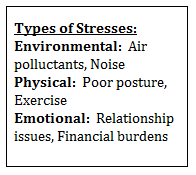
There are many recent studies establishing chiropractic as the most cost-effective treatment for low back pain. Cifuentes, Willets, and Wasiak (2011) reported in the Journal of Occupational and Environmental Medicine: “In work-related nonspecific low back pain, the use of health maintenance care provided by physical therapists or physician services was
associated with a higher disability recurrence than in chiropractic services or no treatment” (p. 396). They went on to report, “people who were mostly treated by a chiropractor had, on average, less expensive medical services and shorter initial periods of disability than cases treated by other providers” (Cifuentes et al., 2011, p.396).
Additionally, a study conducted by Legorreta (2004) compared more than 1.7 million patients considering treatment for their back pain. The outcomes showed that when chiropractic care was pursued, the cost of treatment was reduced by 28%, hospitalizations were reduced by 41%, back surgery was reduced by 32%, and the cost of medical imaging, including x-rays and MRIs, was reduced by 37%. Furthermore, 95% of the patients that received chiropractic care said they were satisfied with their treatment (Sudin, 2013, 34).
References:
Cifuentes, M., Willets, J., & Wasiak, R. (2011). Health maintenance care in work-related low back pain and its association with disability recurrence. Journal of Occupational and Environmental Medicine, 53(4), 396-404.
Joffe-Walt, Chann. “Unfit for work: The startling rise in disability in America.” http://apps.npr.org/unfit-for-work/ Found 15 May 2013.
Legorreta, A.P. (2004). Comparative analysis of individuals with and without chiropractic coverage. Archives of Internal Medicine, 164(18), 1985-1992.
Sudin, Mark. (2013). Organized medicine considers chiropractic as “first line” solution to the opioid epidemic. The American Chiropractor, Vol. 35 Number 4, 34.












 RSS Feed
RSS Feed
